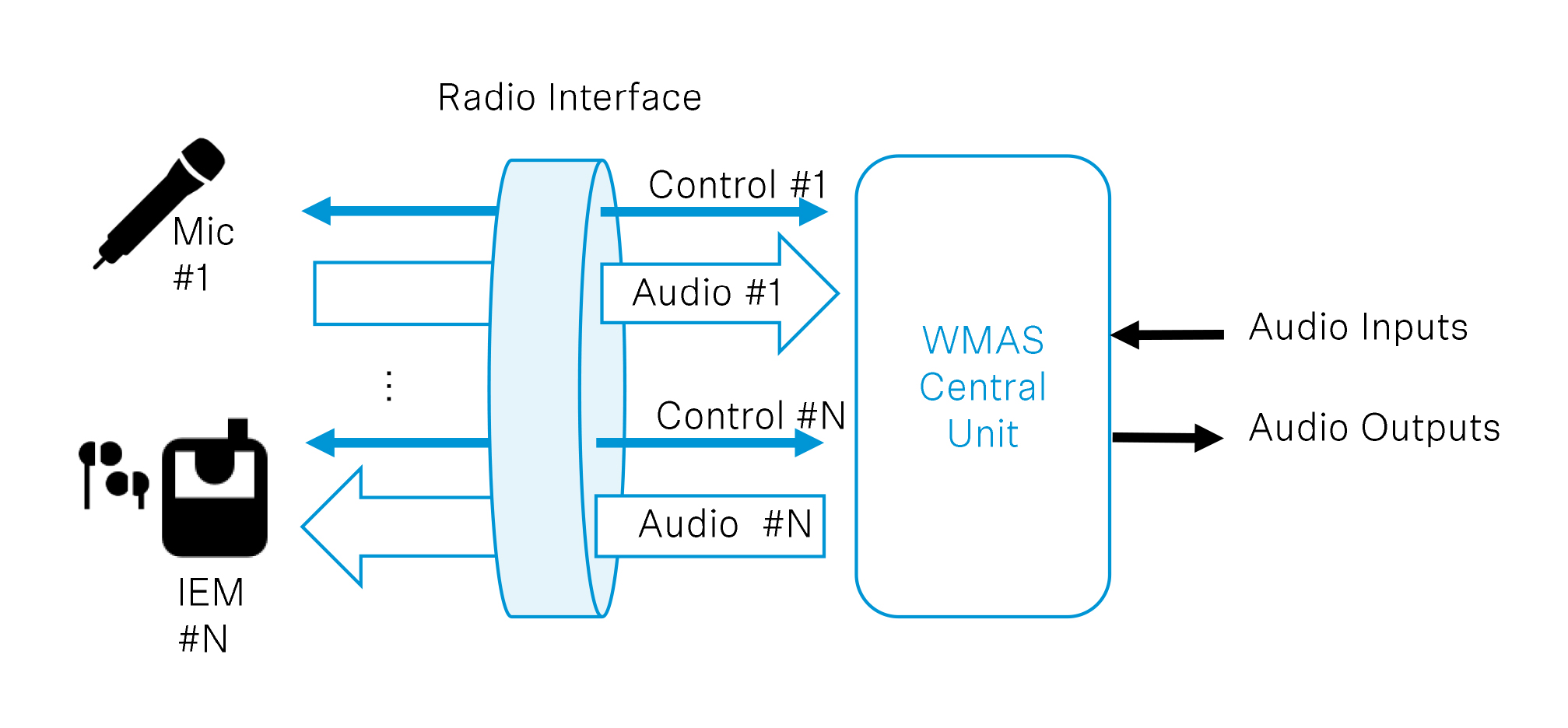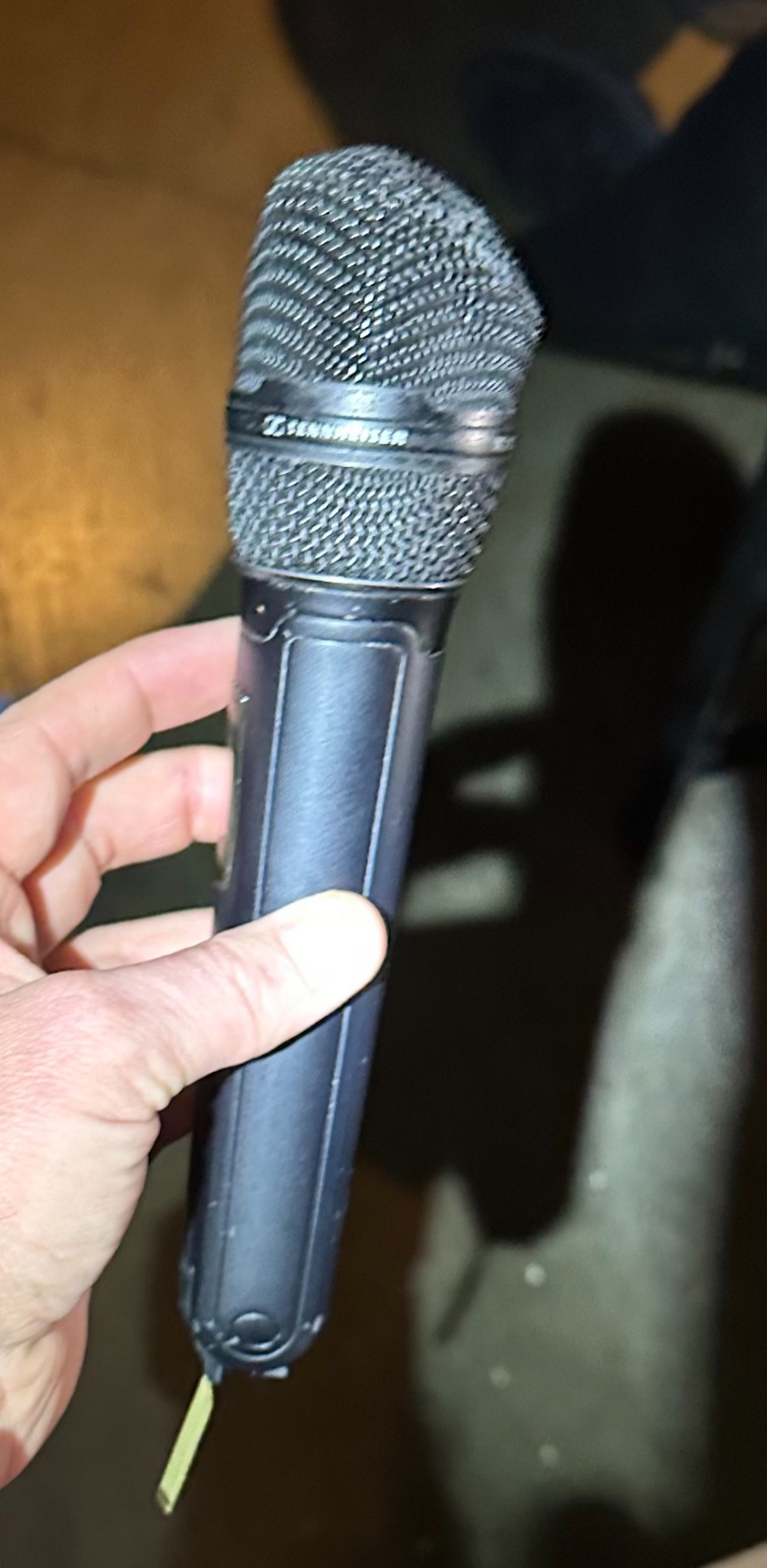The WMAS technology developed by Sennheiser is connection-oriented. This means that a mobile device, such as a microphone transmitter or in-ear receiver, establishes a connection to the central rack-mount unit. This initial connection will be called pairing from here on. When a mobile device is paired to the central unit, an encryption key is exchanged. Then it can be coordinated using a permanent remote control channel within the same bidirectional RF (radio frequency) channel that is used for audio transmission.
This implies that using a second receiver for listening in onto the same RF signal – which is often done today as a sort of safety net – will not be possible anymore. However, it is worth noting that this option will also disappear for legacy narrowband wireless audio systems, as a regulatory requirement to encrypt personal data such as audio will be mandatory in the EU starting 2025.
Redundancy scenarios with Sennheiser’s WMAS technology
Let us now take a look at various fault scenarios and how they can be handled with Sennheiser’s implementation of WMAS.
RF interference
Scenario:
Interference appears on an RF frequency, for example caused by uncoordinated wireless audio systems being switched on without checking frequency availability. Another potential cause can be non-audio devices emitting unwanted RF signals in the TV UHF frequency range.
Countermeasure:
Sennheiser’s WMAS technology implementation will offer permanent scan functionality even during operation. All WMAS devices, be it mobile devices or stationary antennas, continuously monitor and measure the used RF spectrum (so-called distributed spectrum sensing). This data is used to report detected interference to the operator and help him or her to react dynamically to the situation. Field tests have shown that WMAS is able to work around a few interferers – this will give the operator crew at a live event enough time to track the source of interference and have it switched off.
If interference in the allocated TV channel is massive, i.e. several interferers are active in this particular RF channel and it may not be possible to maintain operation, the RF channel can be changed within seconds. Mobile devices do not need to be paired again. They will initiate a brief search, and then detect the relocated carrier. This will cause a short audio interruption of a few seconds – which is nothing if you consider how much time it would take to reprogram several narrowband receivers and associated transmitters. Alternatively, when communication with the mobile devices is still possible to some extent, a frequency change command can be issued over the permanent remote-control channel. This procedure will reduce the time of audio interruption.

Left: A single 200-kHz interferer can be harmful to a dense multichannel narrowband deployment. At least one audio channel is lost; a device operating on a backup frequency is required. If more interferers occur, more channels are lost.
Right: The same interferer hits a WMAs deployment. Thanks to the system’s frequency diversity and advanced signal processing, the WMAS is robust against this co-channel interferer. If more interferers occur, distributed spectrum sensing and remote control of all devices support the operator in taking informed action.






























